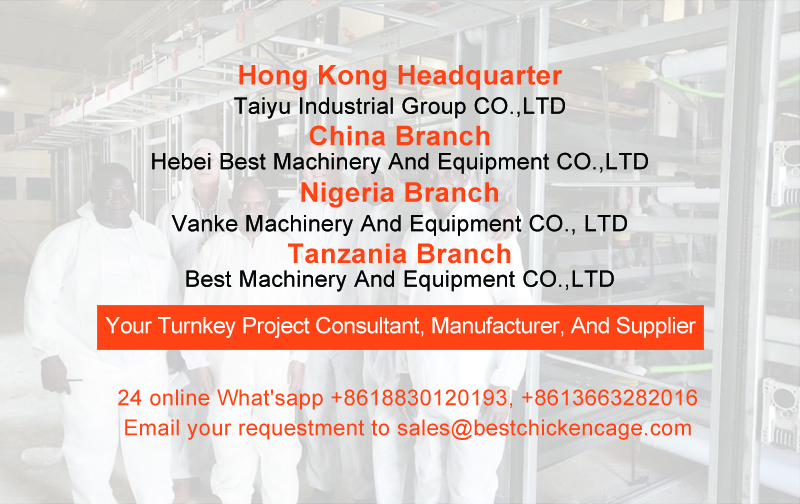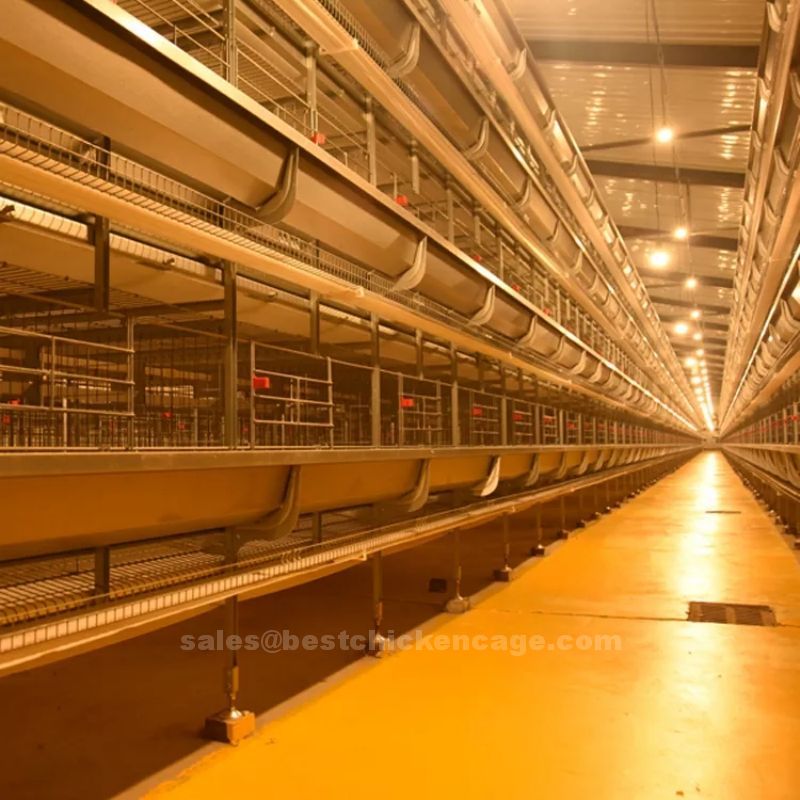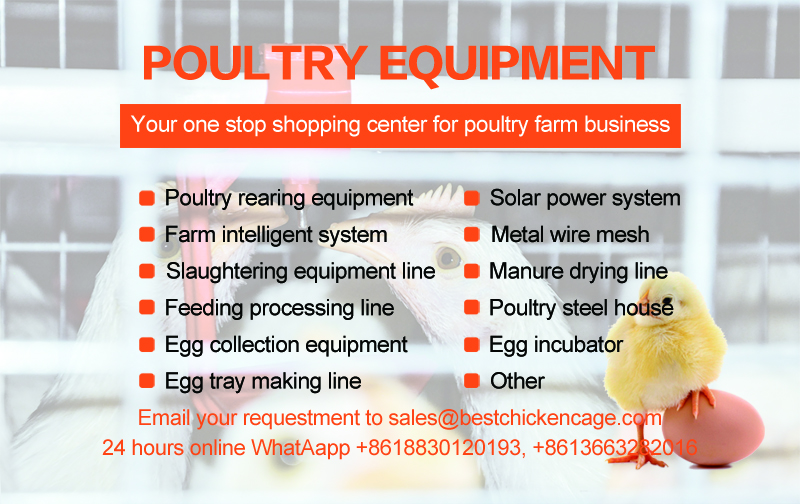Why you need A-type and H-type layer chicken cages depends on factors like farm size budget and management preferences

A-type and h-type chicken layer cages
A-type and h-type chicken layer cages are widely used systems in poultry farming for housing laying hens, with each type suited to different operational needs. The a-type cage has a pyramid-like structure with sloping sides, typically featuring two or three tiers. It is often used in small to medium-scale farms due to its simpler design, easier maintenance, and cost-effectiveness. H-type cages, on the other hand, are designed for high-density and large-scale farming operations. Their vertical stacking structure with more tiers makes efficient use of space, allowing for higher bird capacities within a smaller footprint
A-type cages are known for their ease of operation and maintenance, with good ventilation and natural light penetration. They usually require less automation, making them ideal for farmers who prefer manual systems or have limited resources. H-type cages, however, often include advanced automation systems for feeding, egg collection, manure removal, and climate control. This makes them more efficient for large-scale production but also more expensive to install and maintain
Both systems are designed to provide optimal living conditions for hens, but their suitability depends on factors like farm size, budget, and management preferences. A-type cages are generally used in regions with moderate climates and smaller-scale operations, while h-type cages are favored for intensive farming in areas requiring efficient land use and advanced automation
 Products you are interested in
We are always happy to support our customers and partners with technical questions,
products you may want to learn more, click the name to visit
1. Automatic poultry cage system
Products you are interested in
We are always happy to support our customers and partners with technical questions,
products you may want to learn more, click the name to visit
1. Automatic poultry cage system
2. Poultry farm equipment

Bookmark our website and leave message on our website now to getting guiding to choosing right poultry equipment and enquiry for your poultry farm, we are the designer, manufacturer and supplier of poultry farm turnkey projects
Factors to consider when choosing a-type and h-type chicken layer cages
When purchasing a-type or h-type chicken layer cages, several key factors should guide your decision. First, consider the scale of your poultry operation. A-type cages are more suited for small to medium-scale farms due to their lower cost and simpler design, while h-type cages are better for large-scale, high-density operations requiring efficient space utilization and advanced automation
The level of automation is critical. H-type cages often come equipped with automated systems for feeding, egg collection, manure removal, and climate control, which can significantly reduce labor and enhance productivity. A-type cages, being less automated, may be more appropriate for farms with manual labor availability or limited budgets
Material quality is another essential factor, as durable, corrosion-resistant materials like galvanized steel ensure long-term performance and reduced maintenance. Evaluate the capacity of the cages, including the number of tiers and bird density, to ensure they align with your production goals. Ventilation and climate adaptability are crucial, especially in regions with extreme weather, as these impact bird health and egg production
Cost and maintenance should also be considered. While a-type cages have a lower initial cost and simpler maintenance requirements, h-type systems require a higher upfront investment but offer greater efficiency over time. Additionally, ensure the cages comply with local regulations and welfare standards for laying hens. Ultimately, the choice should align with your farm’s operational needs, budget, and future expansion plans
Reliability
The credibility of a-type and h-type chicken layer cages is influenced by their design, construction materials, and maintenance practices. A-type cages are generally considered reliable for small to medium-scale poultry operations. Their simpler structure, fewer components, and lower dependence on automation make them less prone to technical issues. With regular upkeep, such as cleaning and occasional repairs, they can provide consistent performance over time
H-type cages are also highly reliable, especially for large-scale and intensive farming. Their robust, vertically stacked design and use of high-quality materials, such as galvanized or stainless steel, ensure durability and resistance to wear and tear. The integration of automated systems for feeding, egg collection, and manure removal enhances operational efficiency but requires proper maintenance to prevent malfunctions. Regular servicing of automated components is crucial to maintain their reliability
Both systems are designed to optimize poultry farming operations, but the overall reliability depends on factors like the quality of the cages, adherence to manufacturer guidelines, and consistent maintenance practices. While a-type cages offer simplicity and ease of use, h-type cages excel in handling larger flocks with minimal downtime when managed properly. Selecting cages from reputable manufacturers and ensuring they meet local standards further enhances their dependability
Our services
1. We assist with poultry farm layout, equipment selection, and setup for efficient operations
2. We provide of high-quality a-type and h-type layer cages tailored to farm size and production needs
3. We offer integration of feeding, egg collection, manure removal, and climate control systems
4. We offer regular servicing and technical support to ensure optimal cage performance
5. We provide tailored cage designs to match specific farm capacities and local conditions
6. We provide guidance on cage system operation, maintenance, and best practices for maximum productivity
Frequently asked questions
Q: What is the difference in bird capacity between a-type and h-type cages?
A: A-type cages typically accommodate fewer birds, making them suitable for small to medium-sized farms. They usually have 2-3 tiers. H-type cages, with their multi-tiered vertical design, are capable of housing a significantly larger number of birds per unit area, making them ideal for large-scale, commercial operations
Q: How does automation affect the efficiency of h-type cages?
A: Automation in h-type cages, such as feeding systems, egg collection, and manure removal, enhances efficiency by reducing labor needs, minimizing human error, and ensuring consistent production. Automated climate control systems also help maintain optimal conditions for the birds, boosting overall productivity
Q: What are the operational costs of a-type versus h-type cages?
A: A-type cages generally have lower initial costs and maintenance expenses, making them more affordable for small to medium-sized farms. H-type cages, while more expensive upfront due to their complex automation systems, are more efficient in large-scale operations and can reduce labor costs and improve productivity in the long term
Q: Can a-type and h-type cages be used in different climates?
A: Both cage types can be adapted for different climates with proper modifications. A-type cages are ideal for moderate climates where manual labor and natural ventilation are sufficient. H-type cages, with advanced ventilation and climate control options, are more suitable for extreme climates, as they can maintain optimal conditions for the hens through automated systems


